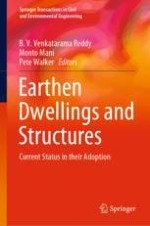2019 | OriginalPaper | Chapter
22. Strength and Elastic Properties of Tank-Bed Soil and Lime–Pozzolana-Based Geopolymer Units and Prisms
Authors : T. K. Jyothi, S. Raghunath, R. V. Ranganath, K. S. Jagadish
Published in: Earthen Dwellings and Structures
Publisher: Springer Singapore
Activate our intelligent search to find suitable subject content or patents.
Select sections of text to find matching patents with Artificial Intelligence. powered by
Select sections of text to find additional relevant content using AI-assisted search. powered by
